As the demand for taller wind turbines increases, the challenge of transporting steel structures pushing 200 meters to their final destination increases along with it.
But what if a turbine tower could be put together on site like a bunch of giant Lego blocks?
Not only would that solve the transportation problem, but it could result in other money-saving measures such as job creation and lower material cost.
That “what if” scenario is a reality in Germany, where Max Bögl Wind AG has been implementing its Hybrid Tower technology to the tune of 300 towers a year since building its first prototype in 2010. Since then, Max Bögl has produced and assembled more than 1,850 towers supplying more than 4,800 MW of installed power.
The company’s next step is to demonstrate how the tower-building technique is a perfect fit for the wind industry in the U.S.
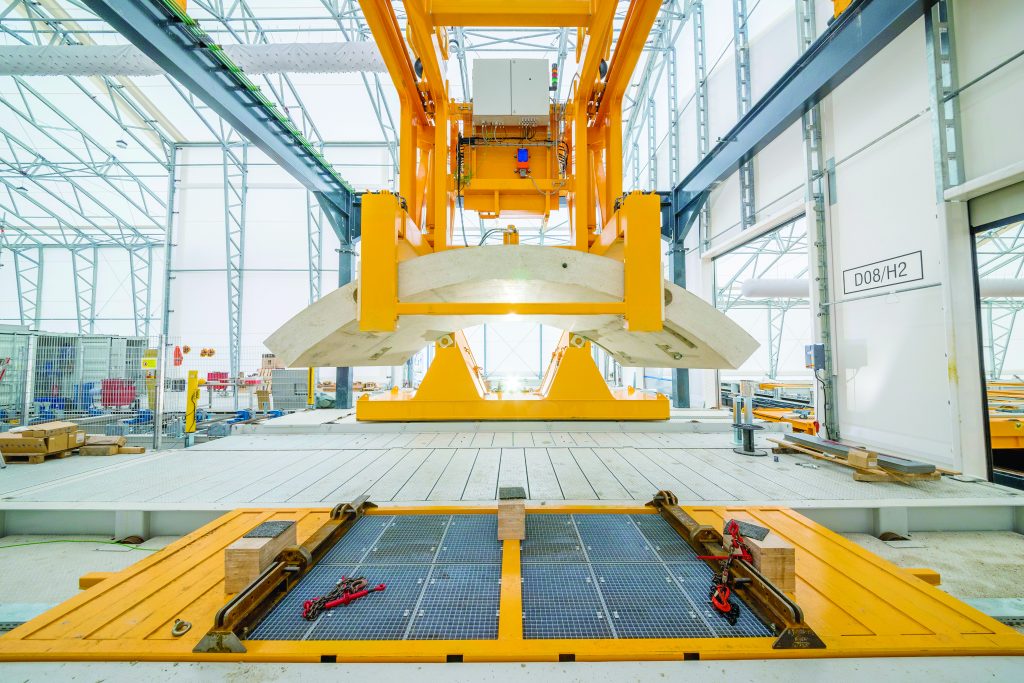
Precision-made prefabricated concrete
Max Bögl’s technology consists of prefabricated, CNC-milled concrete elements with standard steel tube sections. The modular designed towers can reach hub heights up to 190 meters, according to Christoph Bosch, head of sales at Max Bögl.
The construction method stacks rings made up of three segments of prefabricated concrete. Once those rings reach the necessary height, a transitional steel piece that will support the turbine is positioned on top of the concrete structure.
“The CNC milling of the concrete elements allows us to have a really high exactness of 0.1 millimeters between the gaps,” he said. “This exactness allows us to stack the rings on top of each other with a dry vertical and horizontal joint.”
The steel transition piece sits on top of the concrete tower, supplying pressure to the whole system, according to Bosch. It combines the lower concrete elements with the steel tip.
“The concrete elements fit together by the friction between the elements; that’s it,” he said. “There’s no grouting or anything between them.”
Max Bögl is experienced in using concrete for different products and prefabricates its products (like the hybrid tower) in a serial production, according to Bosch.
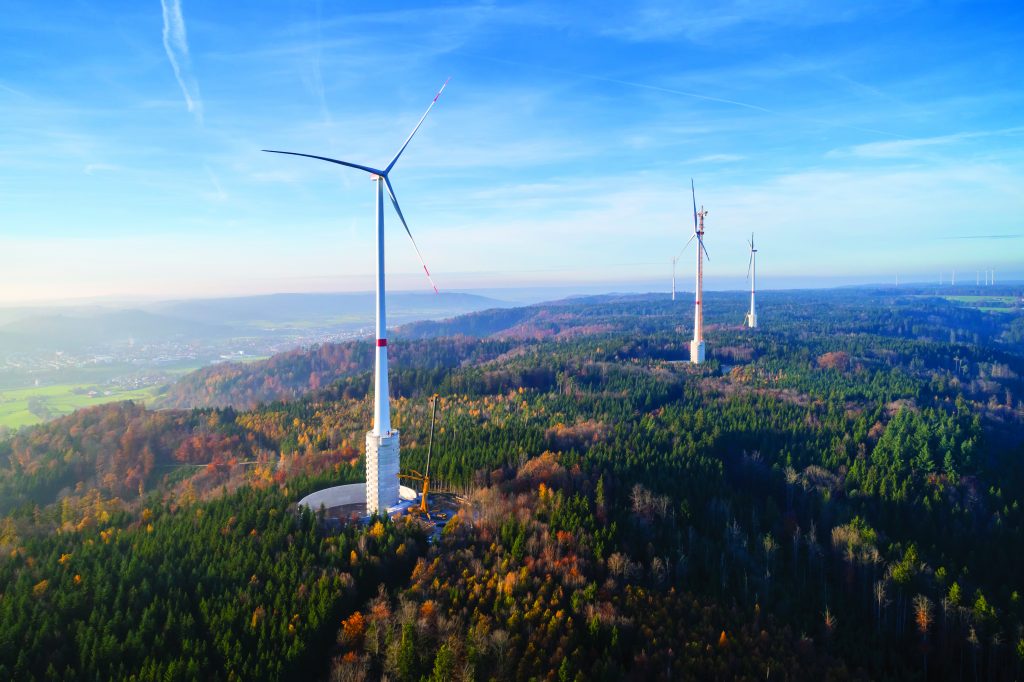
Hub height demands
The Hybrid Tower technology was created to meet the German wind energy sector’s demand for higher hub heights, he said.
“It was difficult to reach hub heights like that with steel towers, so we thought that a combination of concrete elements would be the best way to get higher hub heights in a very economical way,” Bosch said. “We had a lot of experience in prefabrication of the concrete elements with the CNC grinding technology. It was an opportunity for us because we could support the OEMs and reach those kinds of hub heights.”
The average hub height in Germany now sits at 140 meters, but a lot of towers are being built with a hub height of 160 meters or more, according to Bosch.
When hub heights get that high, field tower limitations start to materialize, and transportation starts to become a bigger challenge.
“The concrete tower is prefabricated in segments so we can use standard trucks to transport the elements to the wind park very easily and combine them to one ring,” Bosch said. “We then stack the rings (like a Lego system) on top of each other directly on site.”
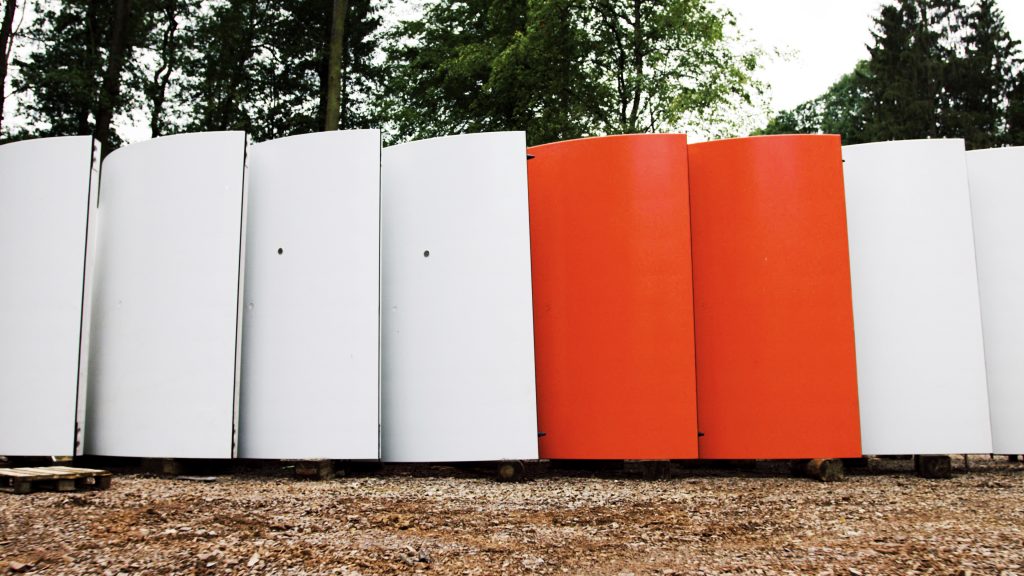
The economics of concrete
Since the costs of constructing a wind farm are often calculated years before a turbine’s blades actually start spinning, being able to factor in an accurate bottom line is a necessity. With the price of steel often fluctuating, using concrete for most of the turbine towers starts to make a lot of sense, according to Bosch.
“If you’re going to quote something today, we can hold the same pricing structure in two, three, or four years because it’s only prefabricated concrete elements,” he said. “This makes it more economical. You need a huge amount of steel if you go with a steel tower structure up to high hub heights.”
Another advantage to the Hybrid Tower design is the ability to produce the tower segments on site, according to Bosch. This has the added benefit of taking care of transportation challenges, but it also can increase local job creation.
“You use local workers to do the production,” he said. “We had a project last year in Thailand, for example, with our mobile fabrication where about 80 percent of the workers were coming from Thailand directly. There was just a small task force team there, and the rest was local. Furthermore, we used local resources for the concrete.”
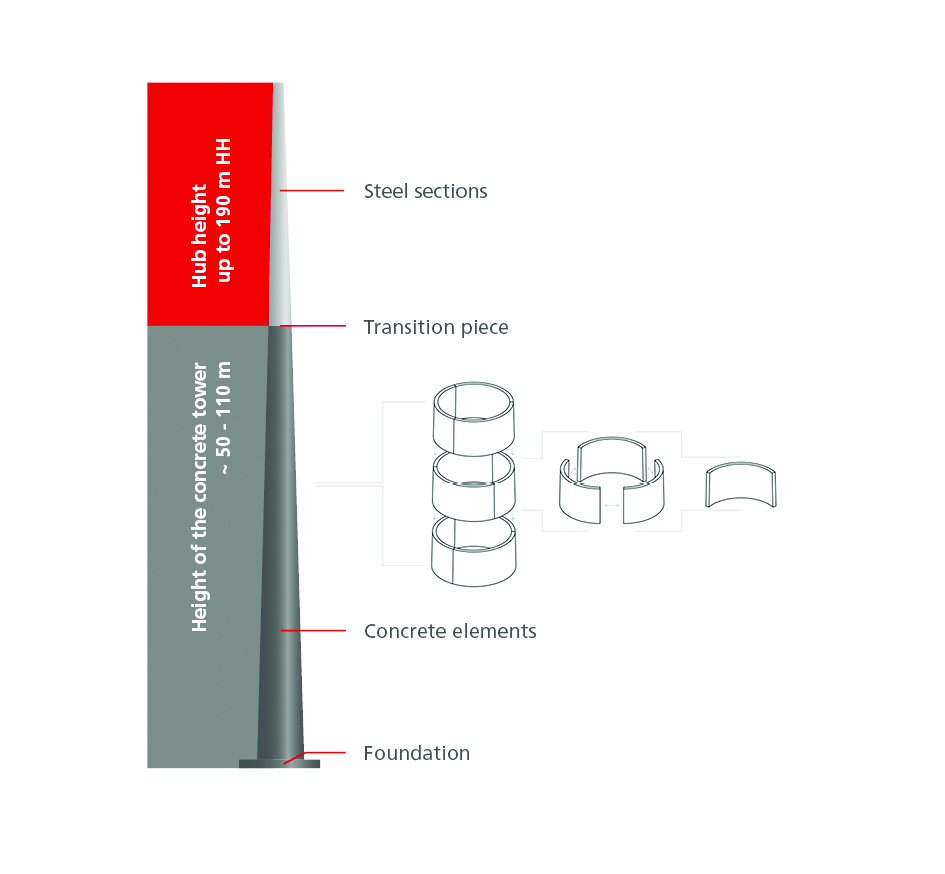
Solving a transportation challenge
If fabrication on or near site isn’t available, the Hybrid Tower construction still has a major advantage over traditional steel towers, according to Bosch.
“We do not need any heavy-load trucks,” he said. “The only heavy load trucks are from the OEM for field sections or the rotor blades. For us, it doesn’t matter. We are using standard trucks.”
Max Bögl is in negotiations now with U.S. developers on several projects where on-site mold applications will be used for more than 30 turbines. But the on-site technology will also be advantageous for smaller projects as well, according to Bosch.
“If the project is smaller, then we look for solutions to set up the mobile fabrication between two or three projects to create a volume for a bigger output,” he said.
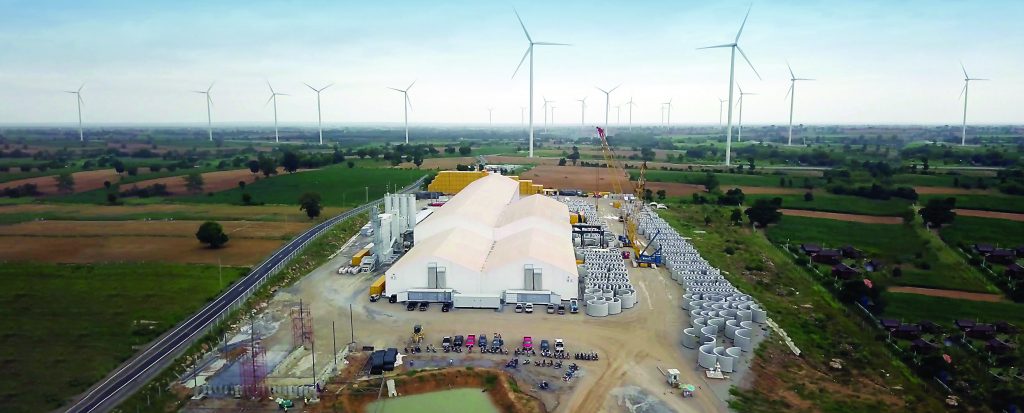
Entering the U.S. market
With U.S. developers now seeking higher hub heights like the ones Germany has been constructing for years, Bosch said he sees the U.S. as a continuing market for Max Bögl’s innovative tower construction.
“We want to be in the U.S. with our own U.S. identity because we see the U.S. as a long-term business market for us,” he said.
And Bosch eyes the end of the PTC as a perfect opportunity that will help hybrid tower technology to continue its transition into the U.S. wind market.
“Everybody is looking for the time period after the PTC,” he said. “We have had several discussions with OEMs and also with developers to identify projects for next year where we can set up our hybrid tower structure in the U.S.”
That and other developments are helping Max Bögl make inroads into the U.S. wind market, making wind energy viable in areas of the country that aren’t considered possible today.
Where wind energy is viable and profitable in the middle of the U.S in states such as Texas and Oklahoma, it will need a hub height boost in order to be sustainable in areas such as the eastern side of the U.S.
“You have to go higher with your wind farm,” Bosch said.
With Max Bögl’s Hybrid Tower technology, it would appear wind energy in the U.S. will continue to reach for new heights.
More info www.mbrenewables.com



























